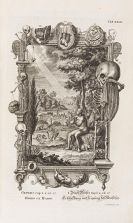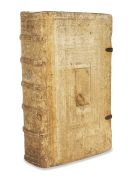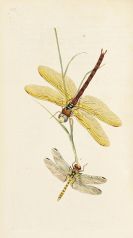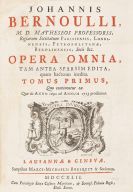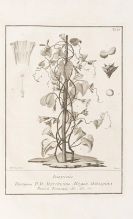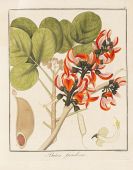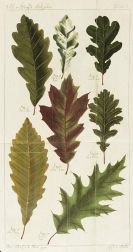
Pierre Joseph Redouté
Saint-Hubert
1759 -
Paris
1840
Pierre Joseph Redouté (1759-1840) was one of the most famous flower painters of all time, he was born into a Flemish painters' family, who earned a living by producing decorative and church paintings. At an early age, he painted natural subjects. At the age of 16 he helped decorate the Karlsburg near Bouillon, eagerly studying the paintings of the Old Masters (with a particular focus on van Huysum). In 1782 he went to Paris, where he initially worked as a decorative painter at the "Theatre des Italiens". In his spare time, he frequently drew in the Jardin du Roi. Here he caught the attention of the botanist Charles Louis L'Héritier, who encouraged him to produce anatomical studies, introduced him to dissection techniques and offered him free access to his botanical library and plant collection.
Pierre Joseph Redouté contributed to L'Héritier's "Stirpes Novae" and "Sertum Anglicum", catching the eye of the flower painter Gérard von Spaendonck, who, together with other artists, produced drawings and paintings for the famous Vélins du Roi. Spaendonck recruited Pierre Joseph Redouté as a staff member, and he subsequently contributed over 500 paintings to this huge undertaking.
An important aspect of this collaboration was that Redouté was introduced to Spaendonck's watercolor technique, by which he used to produce flower paintings with a bright transparency. Finally, Marie-Antoinette appointed him as her court painter. Encounters with the royal family were, however, rare. A famous incidence was Redoute's visit to the royal family in prison during the revolution. They had Pierre Joseph Redouté come to see them, because a rare cactus was in bloom and they wanted this beautiful moment captured in a picture.
During the 1790s, Redouté became one of the most popular flower painters. He perfected the color stipple engraving technique, which he had learned during a stay in London and first applied it in his illustrations for de Candolle's work "Plantes Grasses". From 1802 he published his "Liliacées", in which he largely applied the technical possibilities of color printing to the large and evenly colored leaves and blossoms. In this work he also breached the flower painters' tradition of framing the plants with an outer contour line.
In 1805 he was appointed court and flower painter to the Empress Josephine. After she had been overthrown, he remained in close contact with the Bourbon royal family. From 1817 to 1824 he produced the work that was to become the peak of his success, namely the monography "Les Roses" in an excellent print by Firmin Didot. Each delivery of the finished color copperplates, was received with a storm of enthusiasm, but in spite of his fame and his employment at court, he continued to attribute more importance to the scientific detail than to the effects of composition and color seen in purely artistic flower paintings.
From 1822 until he died, Pierre Joseph Redouté occupied a simple position as a painting teacher, succeeding Spaendonck, and often talked about his art in front of over 150 students in the large hall of the Buffon gallery.
Would you like to sell a work by Pierre Joseph Redouté?
Infos for seller
